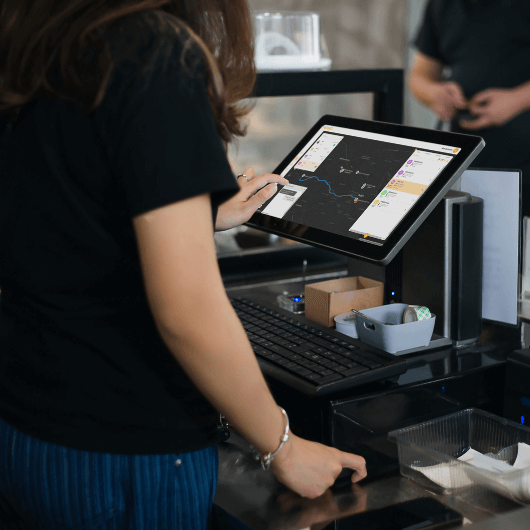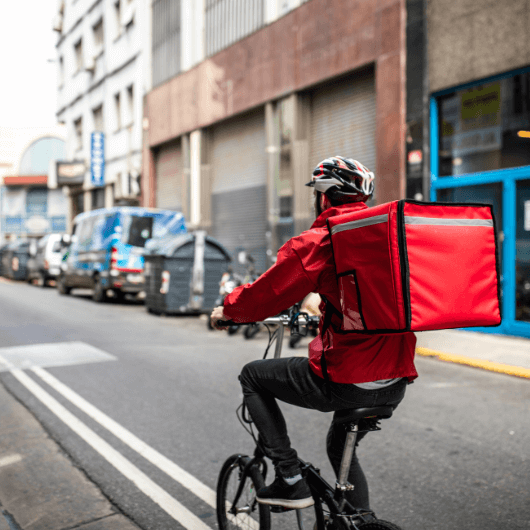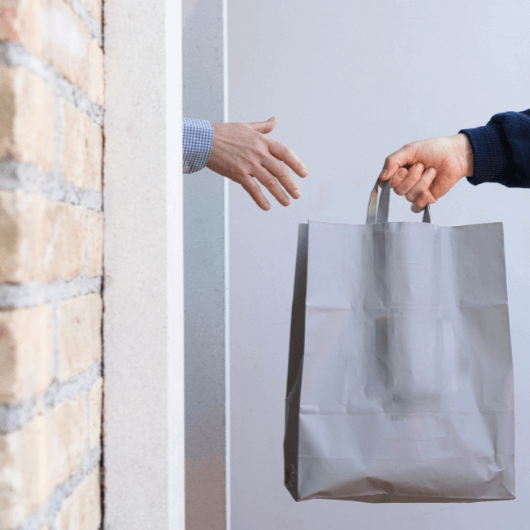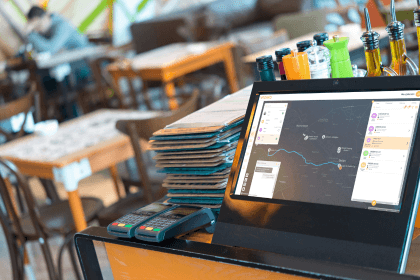
Why employing delivery drivers can help to solve gig economy pitfalls
March 30, 2023
Take control of your delivery operation. Increase efficiency and profitability with an in-house delivery team. It’s easier than you think.

f your restaurant is offering delivery service, it’s likely that you’re relying on third-party food delivery and driver apps to enable your delivery service.
While it has been great to tap into the infrastructure that these third-party providers can offer, the fees they charge can seriously erode a restaurant’s delivery profitability.
No matter the size of the restaurant brand.
In fact, research shows that on top of the 15% charged for commission on orders, another 15% (on average) then needs to be paid for the delivery service if you choose to use that third-parties processes and teams.
It may one have been acceptable to lose 30% worth of profits from your delivery channel when it represented a small percentage of your revenue.
But now, as many industry experts predicted, restaurant delivery is here to stay!
And in all honesty, it’s an even bigger piece of the pie for many restaurants.
While most restaurants became reliant on delivery for survival during the pandemic, customers now expect a flawless delivery service.
In order for restaurants to take back control, become more profitable from their delivery channel and improve their customer satisfaction, they will have to operate a more efficient delivery business.
Leveraging and choosing the right delivery management software solution is one way to do it.
But so too is creating an in-house delivery team.
This can seem like a daunting task and there’s not a great deal of advice available on how to go about it.
For that reason, we have outlined a step-by-step guide for you to create your own in-house delivery team in a simple and straightforward way.
Managing multiple drivers and deliveries efficiently in a relatively short delivery window is close to impossible without a technology system.
This is why it makes sense to start by choosing the right software solution for your restaurant.
Firstly, make sure they are completely restaurant-focused.
Then check out their key features, if they can seamlessly integrate with your current tech stack, and if their pricing model works for you.

To properly assess your delivery needs and hire with intention, you need to know the answers to the following questions:
Once you have this information, you can calculate your ideal order volume, delivery times, and, therefore, the number of delivery drivers you will need for your team.
You’ll also be able to calculate a fair wage for your individual drivers as well as fair driver breaks and a better delivery schedule.
Remember to assess each of the restaurants in your chain individually as each location will have very different needs.

Marketplace delivery apps have seen a huge influx of ‘gig economy’ or self-employed drivers who are attracted to flexible working conditions.
What if you could offer the same perks but would be guaranteed that these drivers would be dedicated to working for your restaurant only?
You can hire delivery workers under freelance contracts depending on your local labor laws, and organize their delivery schedules directly.
You can also put out ads specifically for the times and locations you need them at which allows people to self-select for your exact requirements, making them feel in control.
Or you can onboard delivery drivers that are generally flexible and allow them to set their own schedules each day/week.
When you are advertising for drivers, you may want to indicate how much your drivers can expect to earn per hour.

Generally speaking, remunerating your delivery drivers works like this:
If any of the above are something your brand needs help with, contact our team today!

With applicants coming through, be sure to look for previous experience in food delivery or evidence that they have worked with other companies such as Doordash, Uber Eats, etc.
This will remove the need for any training, ensure they can read route planners/google maps, understand delivery time windows, and multi-stop routes and recognize just how important the customer experience is.
Otherwise, you’ll need to check that each driver has:
Another option is to outsource some or all of your delivery using a third party or Delivery Service Provider.
With this, you can hire their drivers while still managing your own delivery system.
Many restaurants use a number of their own drivers but then use DSP drivers for any ‘overflow’ volume, particularly when their in-house team cannot fulfill a sudden influx of orders themselves.
This is an option Papa Gino’s found particularly useful!
If this is something you think could benefit your restaurant brand talk to our team today for advice on managing your in-house team or to find the best DSP in your area.

Read more about the restaurant delivery industry below!

March 30, 2023

September 4, 2022

March 30, 2023